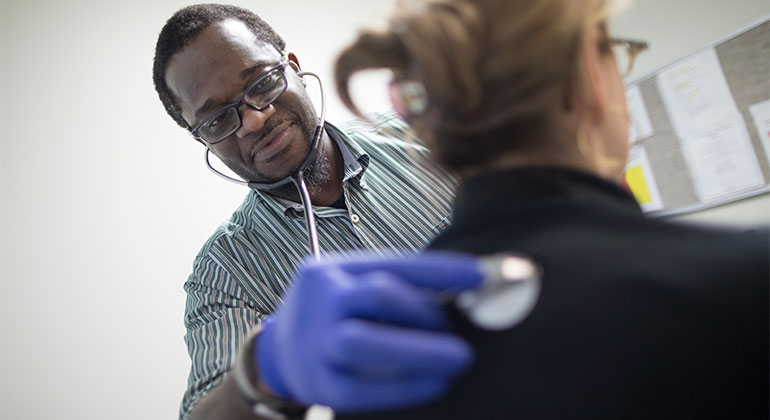Drug-Induced Liver Injury Research

Sometimes prescription and other medications can damage the liver. Drug-induced liver injury affects more than one million people in the United States each year. You may have no symptoms until your liver is damaged and you have developed jaundice, a yellowing of your skin and the whites of your eyes.
Mount Sinai is involved a major effort to conduct research to discover ways to predict, diagnose, and prevent drug-induced liver injury.
To conduct research, the National Institute of Diabetes and Digestive and Kidney Diseases, a division of the National Institutes of Health, has established the multi-center Drug-Induced Liver Injury Network (DILIN). Mount Sinai’s Division of Liver Diseases is participating in the DILIN. Two of our physicians at the Icahn School of Medicine at Mount Sinai are co-principal DILIN investigators:
In addition, Matthew Galsky, MD of the Division of Hematology/Oncology works closely with Drs. Ahmad and Odin to evaluate drug-induced liver injury in cancer patients undergoing chemotherapy. This is essential, since the possibility of developing drug-induced liver injury limits the ability to use chemotherapy to treat cancer. As we learn more about prevention and treatment, our discoveries may enhance cancer outcomes.
Paola Nicoletti, MD, PhD, of the Mount Sinai Department of Genetics and Genomic Sciences directs the DILIN genetic studies.
The aim of our research is to study improved diagnostic and predictive criteria. We are working to identify how to use the presence of disease in bodily fluids (such as blood serum) and genetic biomarkers.
We also are planning future studies to explore various treatment protocols. Mount Sinai’s liver specialists are contributing their expertise to this research, the largest program of its kind in the United States.
Our studies include patients from diverse ethnic backgrounds. We enroll subjects with a history of drug-induced liver injury since the year 2000. We will also enroll patients with a brief history of the disease, including those diagnosed in the last six months, and especially those diagnosed within three to four weeks.
Mount Sinai is also leading evaluations of the following areas:
- Acute hepatitis C infection masquerading as drug-induced liver injury
- The use of medication used to lower cholesterol
- The role of liver biopsy in the diagnosis of drug-induced liver injury
At Mount Sinai, we are continuing the work to find new ways to help prevent unexpected liver problems due to the use of prescription and non-prescription drugs.